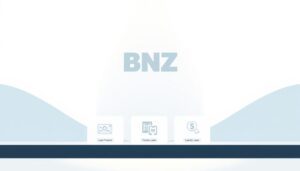Ever curious about the Canadian mortgage system? Knowing how mortgage loans work in Canada is key for homebuyers. There are many mortgage types, like fixed-rate and variable-rate. This section covers the mortgage process, including lenders and brokers.
It also shares important stats on homeownership in Canada. Explore the details of getting a home loan in Canada.
Understanding Mortgage Basics
For first-time homebuyers, mortgages can seem overwhelming. It’s key to grasp the basics to make smart choices. Terms like principal, interest, down payment, and amortization are crucial. The principal is the loan amount, and interest is the borrowing cost.
A down payment is a big deal in buying a home. It’s usually 5% to 20% of the home’s price. A bigger down payment can mean better loan terms and lower monthly payments. Knowing these terms helps you understand your financial commitment.
Also, a mortgage glossary is a great tool for those new to mortgage terms. Knowing these terms makes the application process smoother. It also helps you understand your long-term obligations.
The Mortgage Application Process
In Canada, getting a mortgage involves several key steps. First, you need to collect important documents like proof of income and tax returns. These are crucial for lenders to check if you can afford a home.
Another important part is checking your credit history. Lenders look at your credit score to see if you’re reliable. A good credit score can help you get a better mortgage deal.
The debt-to-income ratio is also vital. It shows how much of your income goes to debts. A lower ratio means you can handle more debt, which is good for your mortgage application.
Many people use a mortgage broker to help. A broker can make the process easier by guiding you and finding the right lender. They know what lenders need and help you meet those requirements.
Interest Rates and Amortization
Understanding how interest rates affect mortgage payments is key for anyone looking to buy a home. Mortgage rates can change the total cost of a loan over time. In Canada, people often choose between fixed and variable rates.
Fixed rates stay the same, offering stability. Variable rates change with interest rates, leading to lower payments but more uncertainty.
The amortization period is how long you have to pay off your mortgage. A longer period means lower monthly payments but more interest paid over time. A mortgage calculator helps figure out monthly payments based on the loan amount, interest rate, and amortization period.
This tool shows how different choices affect your finances. Knowing about interest rates and amortization is vital for good financial planning. Prospective homeowners should think carefully about their options, matching them with their budget and goals.
Mortgage Insurance in Canada
Mortgage insurance is key for many homebuyers in Canada, especially those with smaller down payments. If a buyer chooses a high-ratio mortgage, they need mortgage default insurance. This insurance protects lenders if the borrower can’t pay their mortgage.
The Canada Mortgage and Housing Corporation (CMHC) offers mortgage insurance. It helps more people become homeowners. Without it, many would struggle to get a mortgage.
Conventional mortgages don’t need insurance because they have bigger down payments. Knowing about mortgage default insurance helps potential homeowners make informed choices. For those with high-ratio mortgages, understanding the insurance cost and benefits is important.
Managing Your Mortgage
Managing your mortgage well means having a clear plan for paying it back. Homeowners should look into different ways to pay off their mortgage. This can change how much you pay and for how long.
Making extra payments can cut down on interest costs over time. These extra payments go straight to the loan’s principal. This can shorten your loan term and save you money.
Refinancing is another smart move. It might mean getting a new loan with better terms or a lower interest rate. This can make your payments easier to handle. But, it’s key to check the current rates and market before refinancing.
Renewing your mortgage is also crucial. When your mortgage term ends, you’ll need to renew it. This might mean getting a new interest rate. Keeping up with rate changes is important for making the best choice.
By carefully managing your mortgage, you can avoid problems and improve your financial health. This is true for the whole time you have the loan.
Government Programs and Incentives
In Canada, the government has many mortgage programs to help people buy homes. The Home Buyers’ Plan lets eligible people take up to $35,000 from their RRSPs for a down payment. This helps new buyers and encourages saving for retirement.
The First-Time Home Buyer Incentive also helps by reducing monthly mortgage payments. It offers up to 10% of a new home’s price and 5% for existing homes. This makes buying a home more affordable for many.
The Canada Mortgage and Housing Corporation (CMHC) is key in affordable housing. CMHC programs offer tools and resources to make buying a home easier. These programs provide support and guidance for first-time homebuyers.





